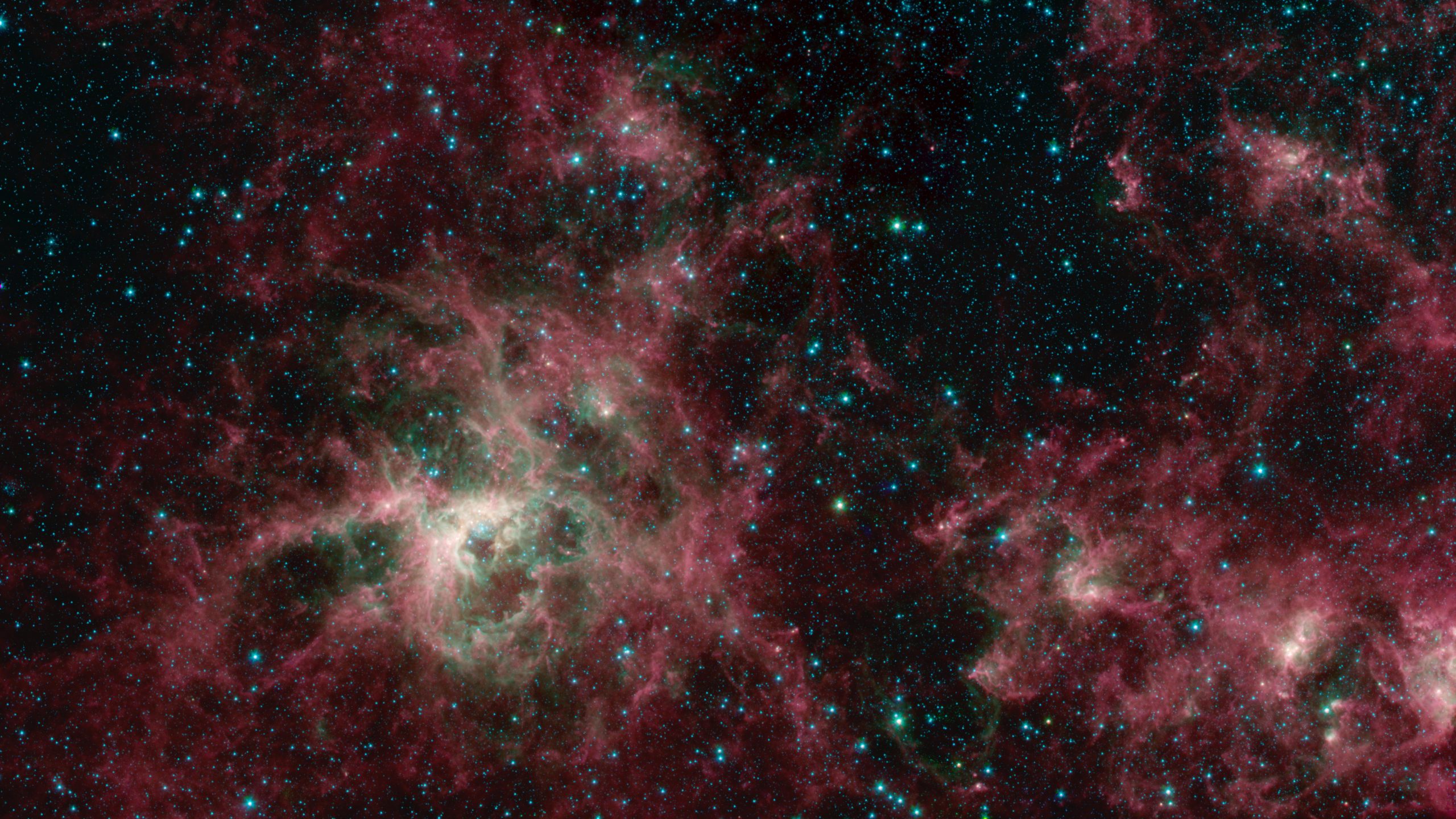This image from NASA’s Spitzer Space Telescope shows the Tarantula Nebula in three wavelengths of infrared light, each represented by a different color. The magenta-colored regions are dust composed of molecules called polycyclic aromatic hydrocarbons (PAHs), which are also found in ash from coal, wood and oil fires on Earth. PAHs emit in multiple wavelengths. The magenta color is a combination of red (corresponding to an infrared wavelength of 8 micrometers) and blue (3.6 micrometers). The green color in this image shows the presence of particularly hot gas emitting infrared light at a wavelength of 4.5 micrometers. The stars in the image are mostly a combination of green and blue. White hues indicate regions that radiate in all three wavelengths.
The Tarantula Nebula was one of the first targets studied by the infrared observatory after its launch in 2003, and the telescope has revisited it many times since. Now that Spitzer was retired on Jan. 30, 2020, scientists have generated a new view of the nebula from Spitzer data.
Image Credit: NASA/JPL-Caltech
来自NASA的斯皮策太空望远镜的这张图片显示了狼蛛星云的三种红外光波长,每种波长用不同的颜色表示。品红色区域是由多环芳烃(PAHs)分子组成的尘埃,多环芳烃也存在于地球上煤、木材和石油燃烧产生的灰烬中。多环芳烃会发出多种波长的光。洋红色是红色(对应于8微米的红外波长)和蓝色(3.6微米)的组合。该图像中的绿色表示存在特别热的气体,该气体会发出波长为4.5微米的红外光。图像中的星星大部分是绿色和蓝色的组合。白色的色调表示在所有三个波长中都有辐射的区域。
狼蛛星云是红外天文台在2003年发射后第一批研究的目标之一,此后望远镜对其进行了多次观测。现在斯皮策太空望远镜于2020年1月30日退休,科学家们从斯皮策太空望远镜数据中获得了一个新的星云视图。
图片来源:NASA / JPL-Caltech







